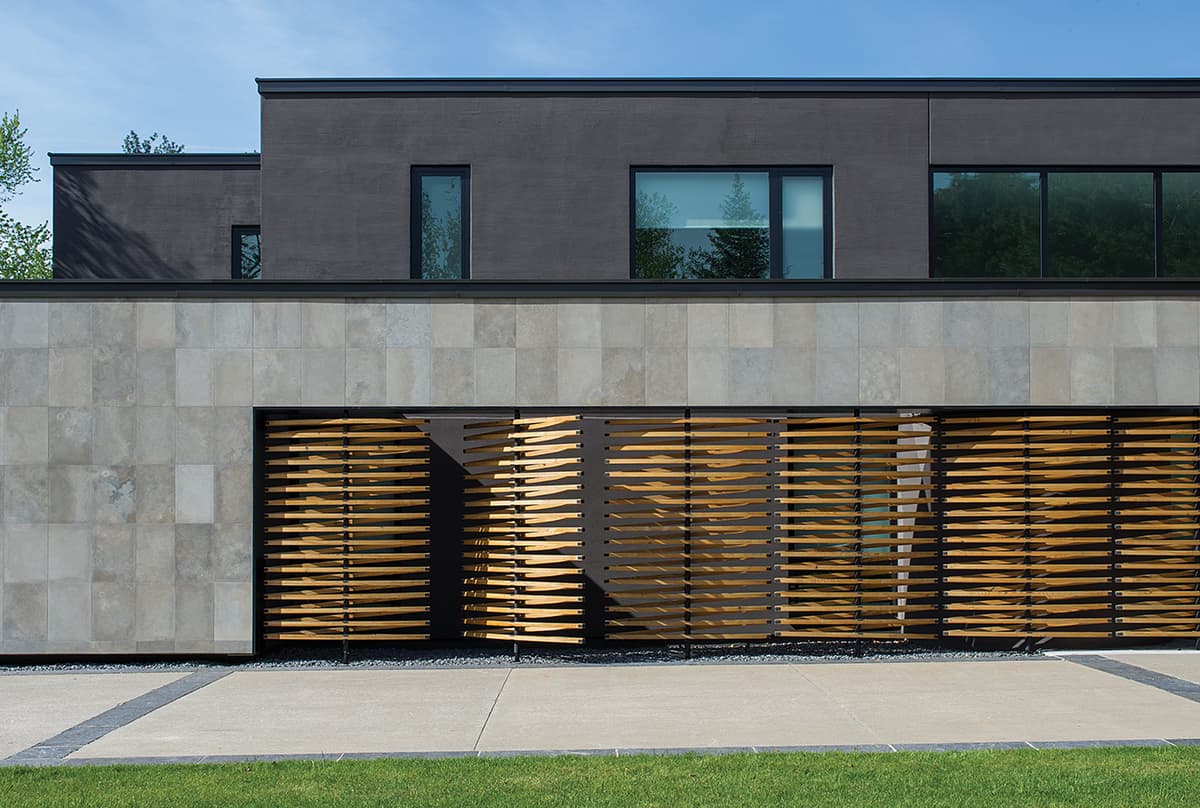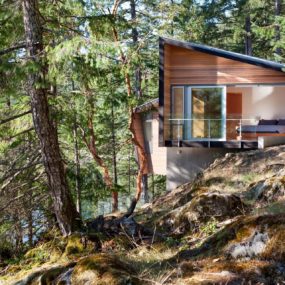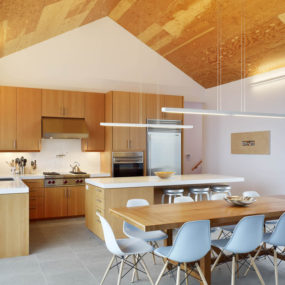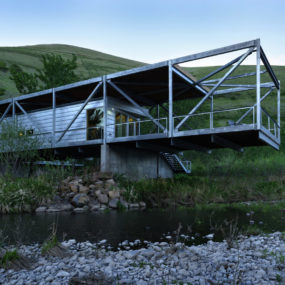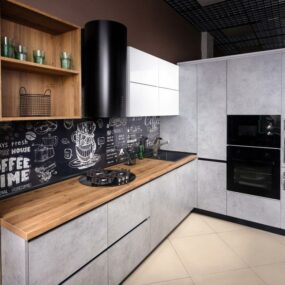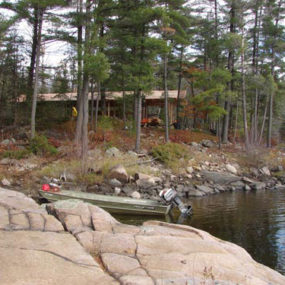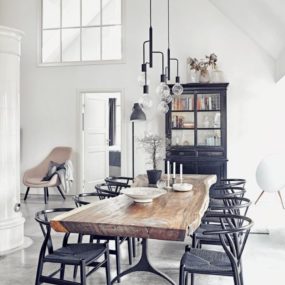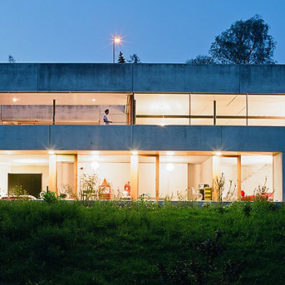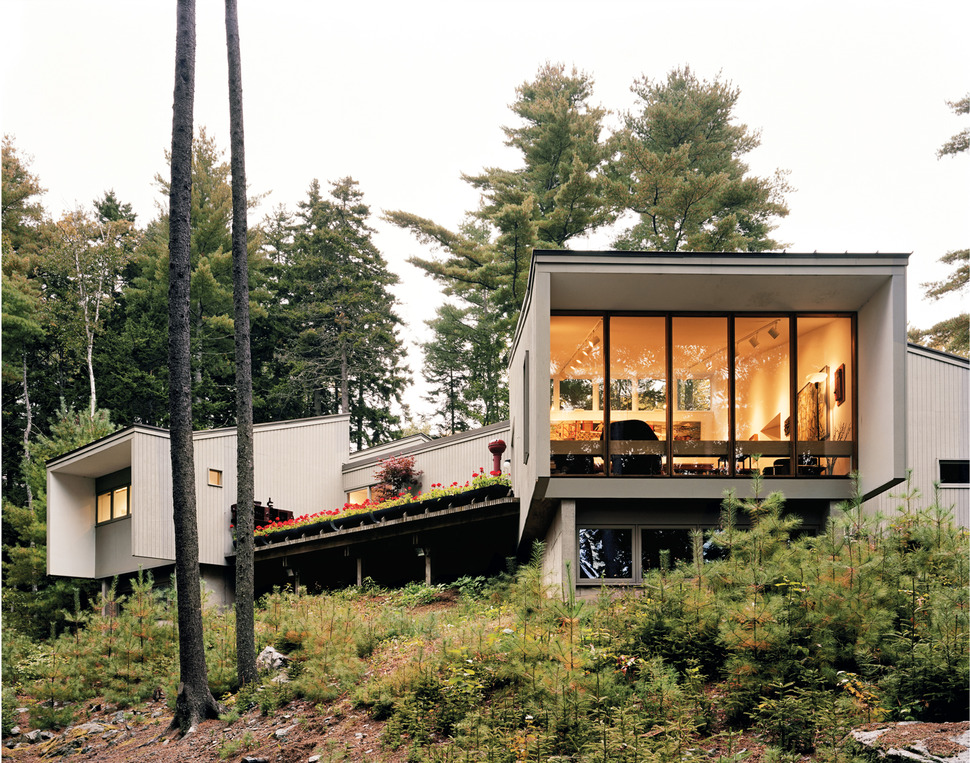
Maison Amtrak was designed by architect Peter Cohen for himself, his wife Sally and his golden retriever “Daisy”. Located in the coastal forests near Ellsworth, Maine and just above the Union River, the design allowed Peter to “clip” the various living modules to a central spine in such a way as to produce the least amount of impact on the natural landscape and at the same time take advantage of the riverscape. Peter dubbed his home “Maison Amtrak” because the home’s footprint ironically reminds him of derailed train carriages.
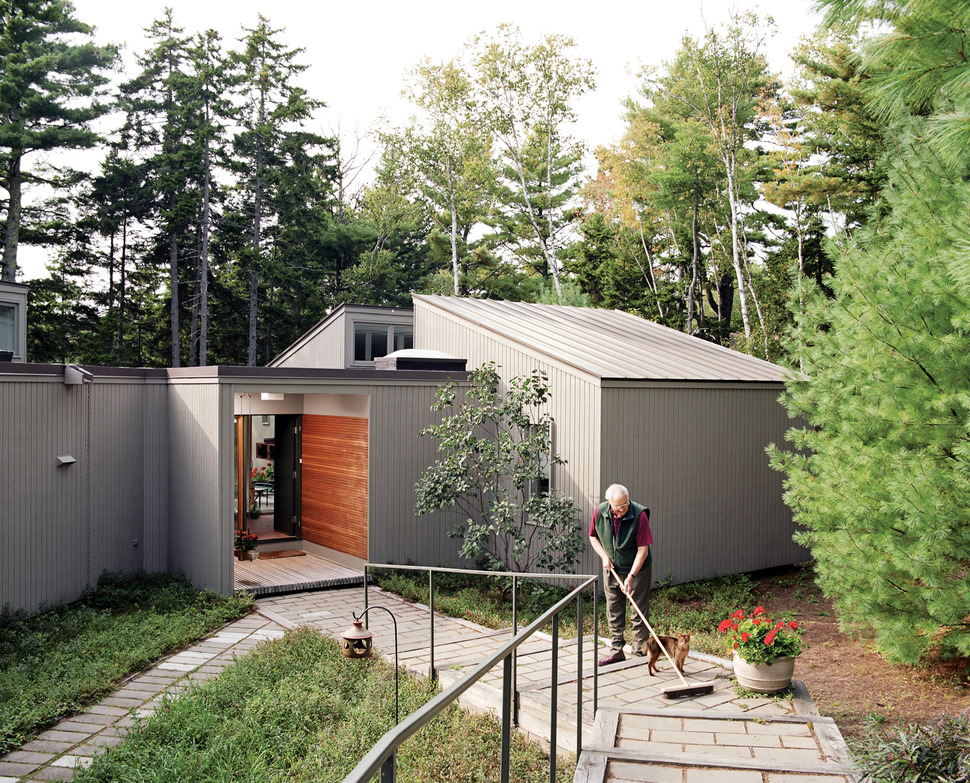
Maison Amtrak is below the street level and a series of deep steps leads down to the main entrance which showcases Cohens love of Japanese design within its geometric simplicity. The porch alcove also features beautiful horizontal Douglas-fir cladding in a clear finish, contrasting with the soft silvery grey of the vertical siding used on the rest of the facade.
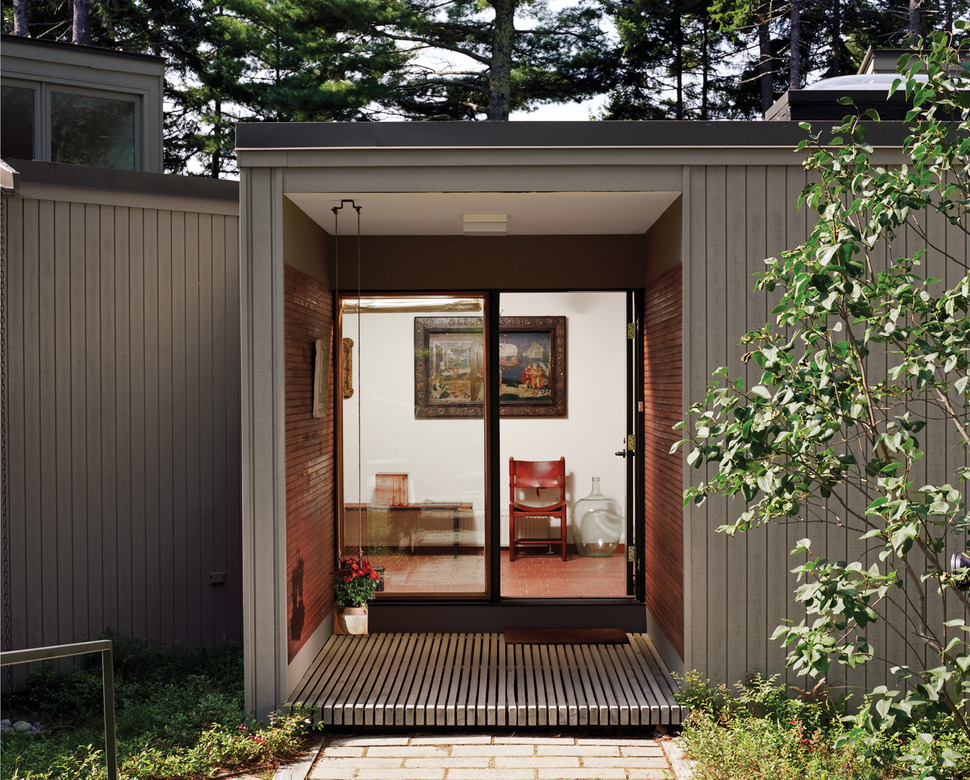
Aside from the beautiful Douglas-fir side walls, the entry also features a deck of pressure treated Douglas-fir 2x4s installed on edge and left untreated so that they could weather naturally into a soft silvery grey patina.
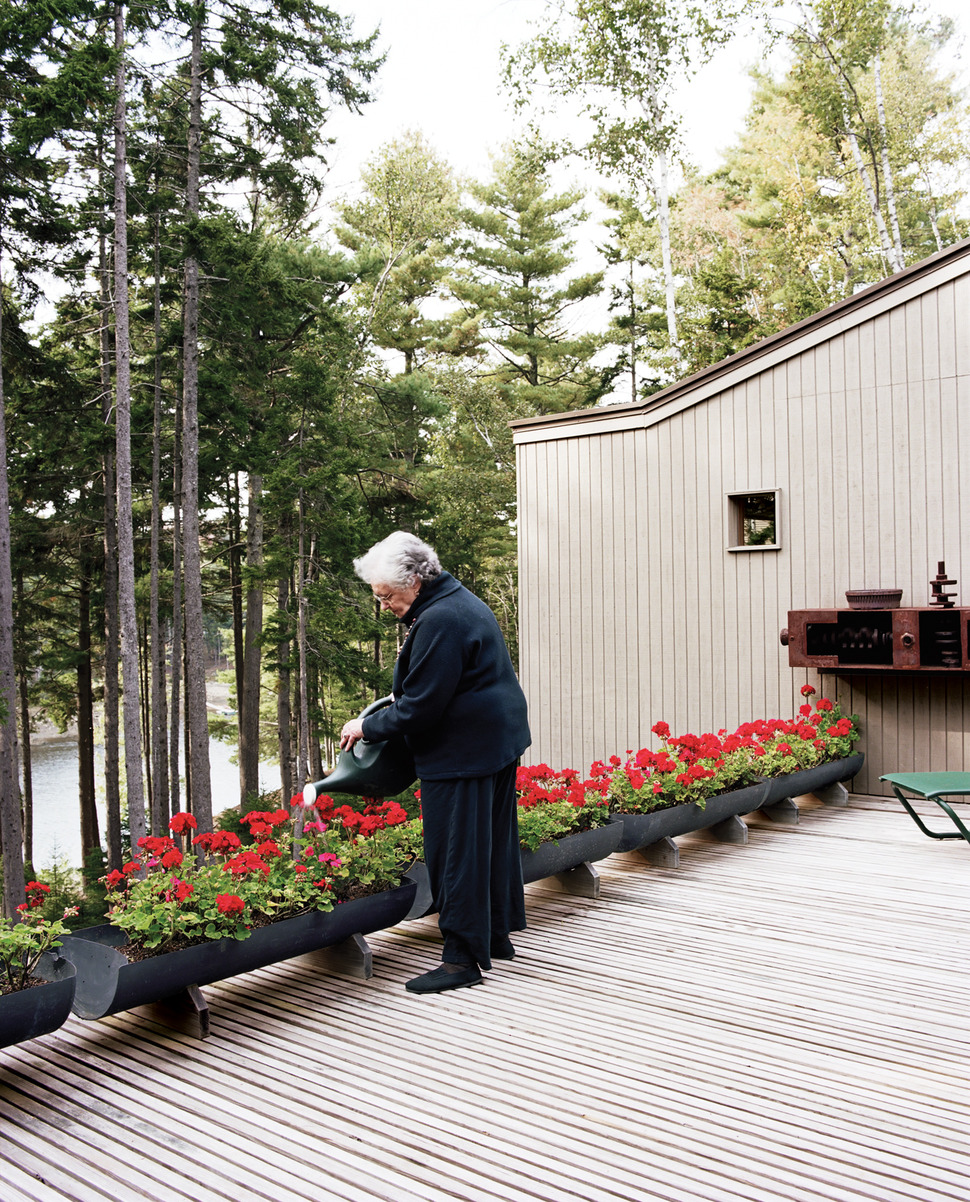
The back terrace has the safe deck treatment as the entry and instead of installing the usual safety rails, Cohen designed a series planters filled with geraniums and made from steel cylinders cut lengthwise and mounted on wooden supports. Cohen was able to pass these planters as a safety rail with the addition of a tennis net strung amongst the geranium – hidden amongst the blossoms. The deck separates the dining and living room modules from the master bedroom module.
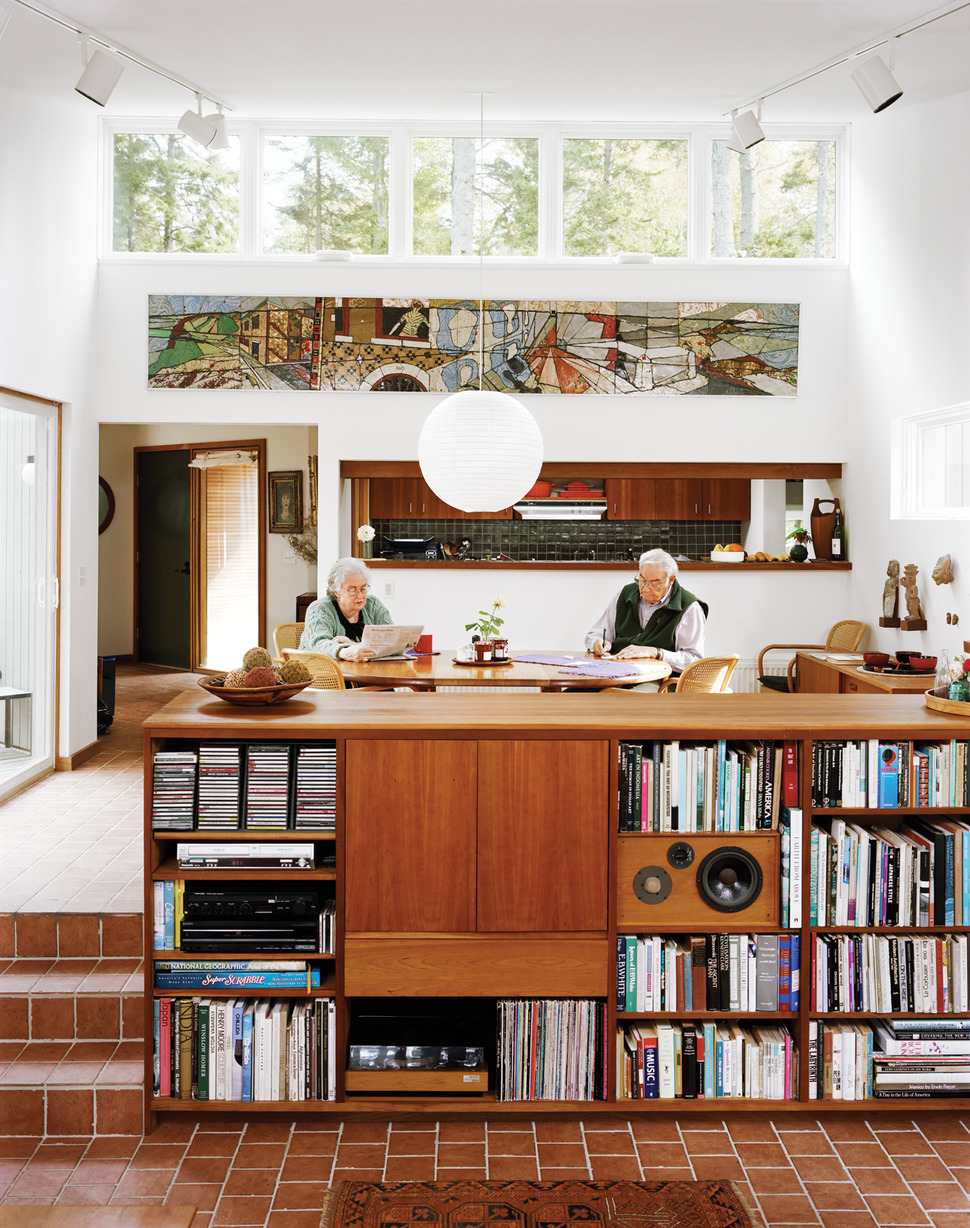
The dining room accesses the back terrace through a pair of sliding doors. It is located between the kitchen and living room – which is down 3 stairs – and while the glass sliders let natural light in, so too do the clerestory windows above the kitchen wall.
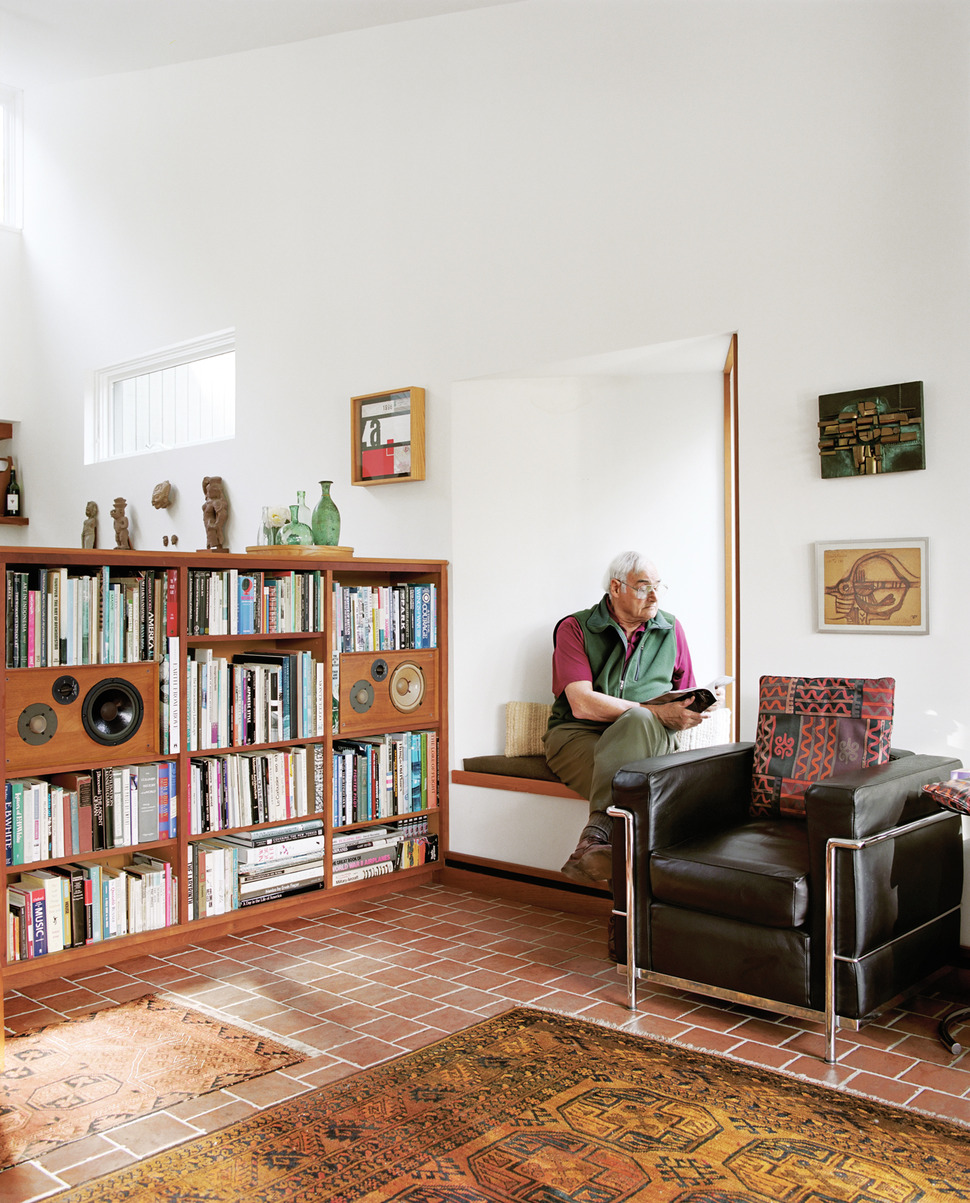
The living room is separated from the dining room by a large bookshelf fitted with retro speakers. The mid century speakers are complimented by a pair of black leather and chrome LC2 chairs by Le Corbusier that are positioned to take in the best views of the river below but Cohen’s favorite spot to sit is in an operable window seat.
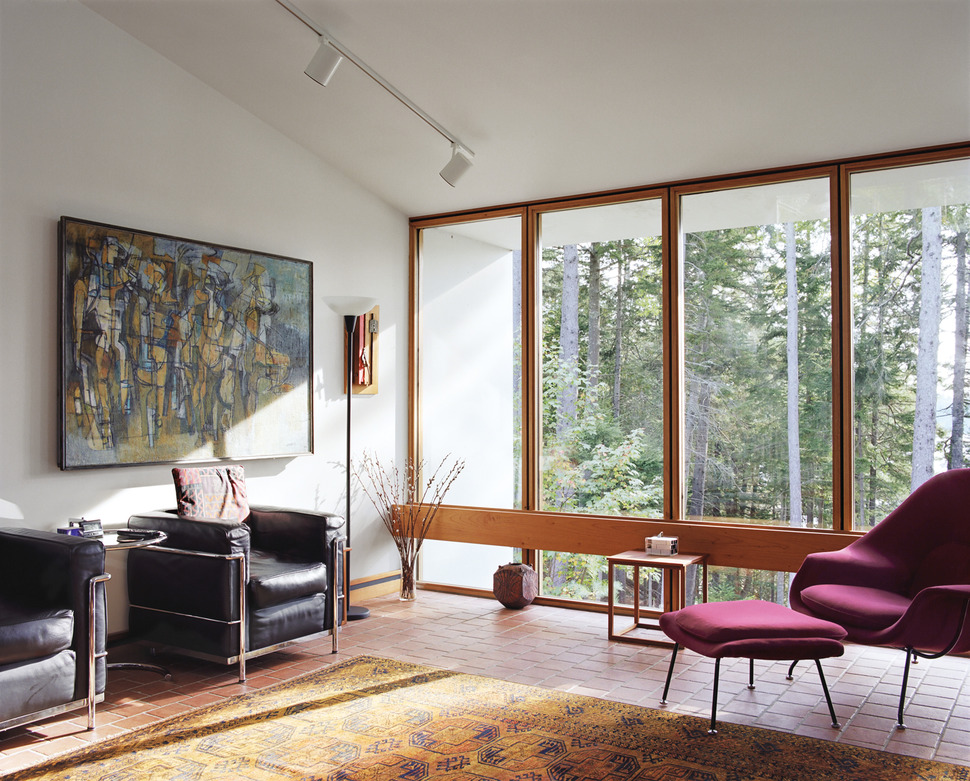
Aside from the pair of LC2 Le Corbusier chairs, the living room also showcases Cohen’s pride and joy – a Womb chair by Eero Saarinen in a deep raspberry upholstery. Classic mid-century furnishings and stunning views, you couldn’t ask for much more in a living room.

While the living room is 3 steps down, the kitchen and foyer hall continue on the same level as the dining room with the kitchen located in its own separate room accessed from the hall but overlooking the dining room through a serving void between the upper and lower cabinets.
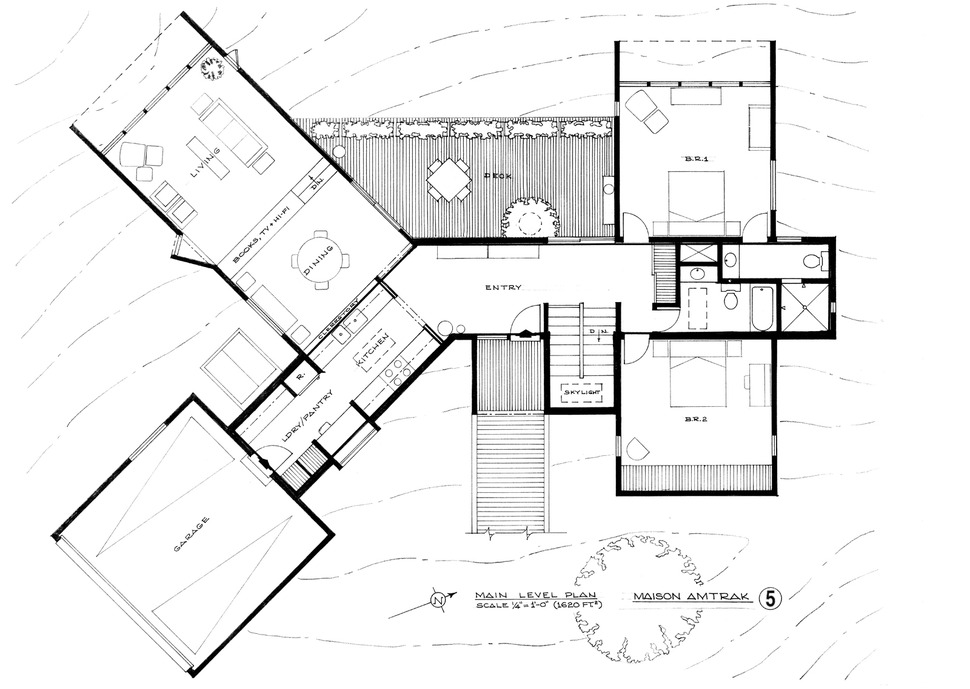
The garage opens to the kitchen pantry while the main entrance opens to a hall foyer with the social zone on the left and stairs going to the lower level on the right, further to the right are two master bedrooms.

Continuing the theme of mid-century classics is an Eames lounger within one of the master suites. The room is large and spacious at 16x16ft and features a sloped ceiling.
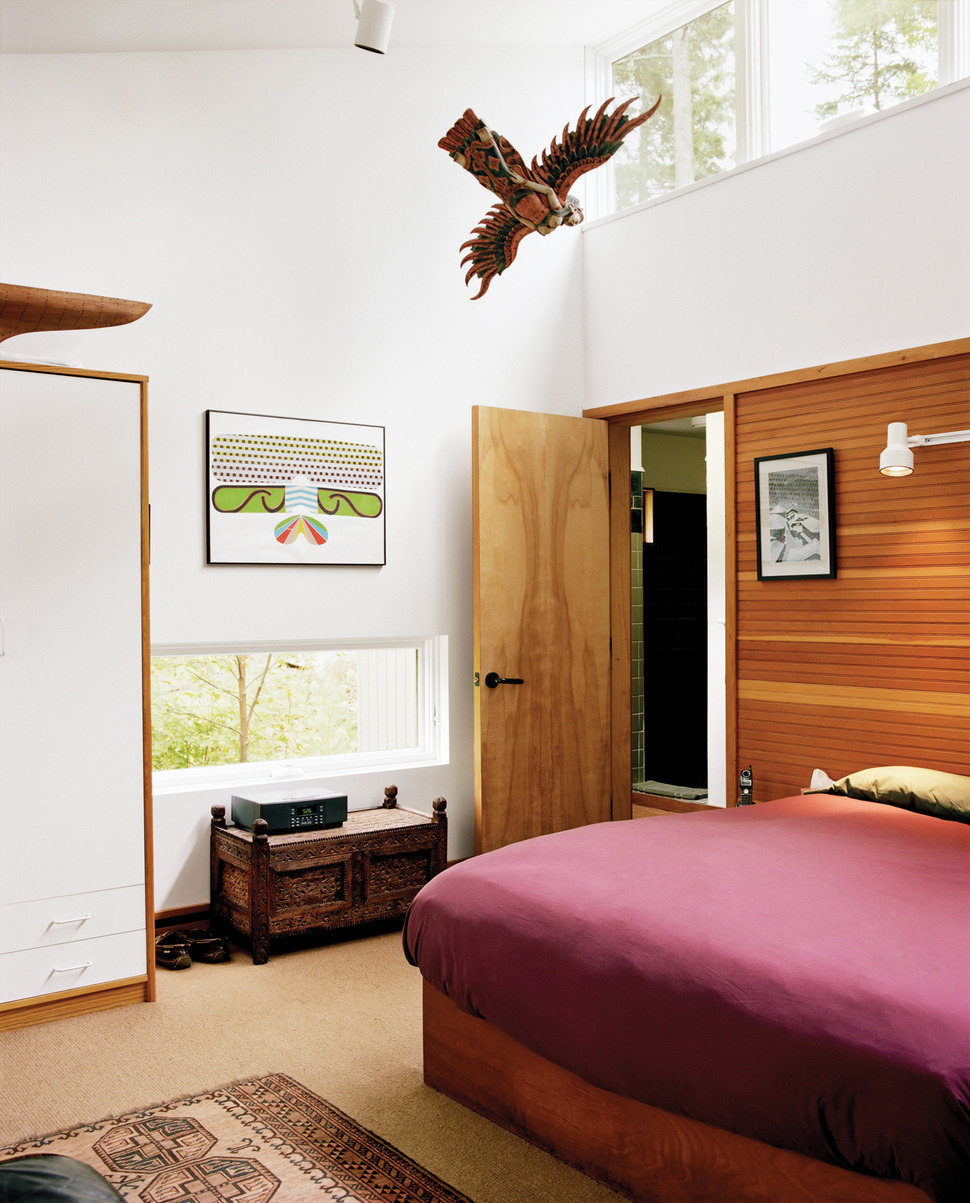
The headboard wall features more clear finish Douglas-fir mounted horizontally and just next to it is a doorway that leads to a large ensuite. High above the wood headboard is a row of clerestory windows while a low linear window next to the bed presents the best view in the house of the river – best appreciated while in bed.
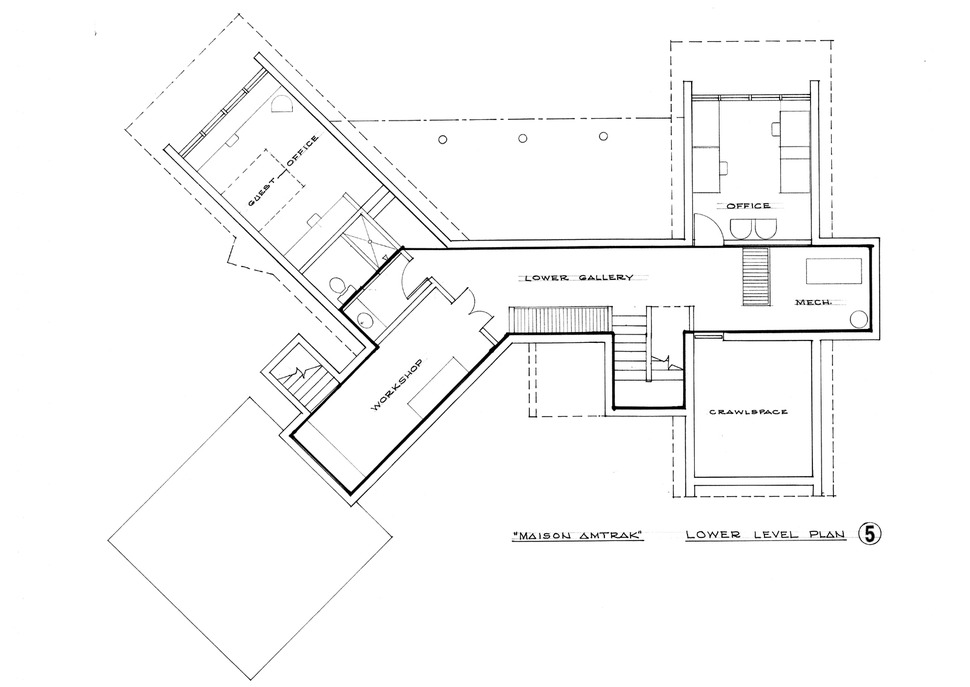
Downstairs a hallway leads to the workshop on the left as well as a home office that doubles as a guest bedroom. On the right is a second office, the mechanical room and a storage area within the crawl space.
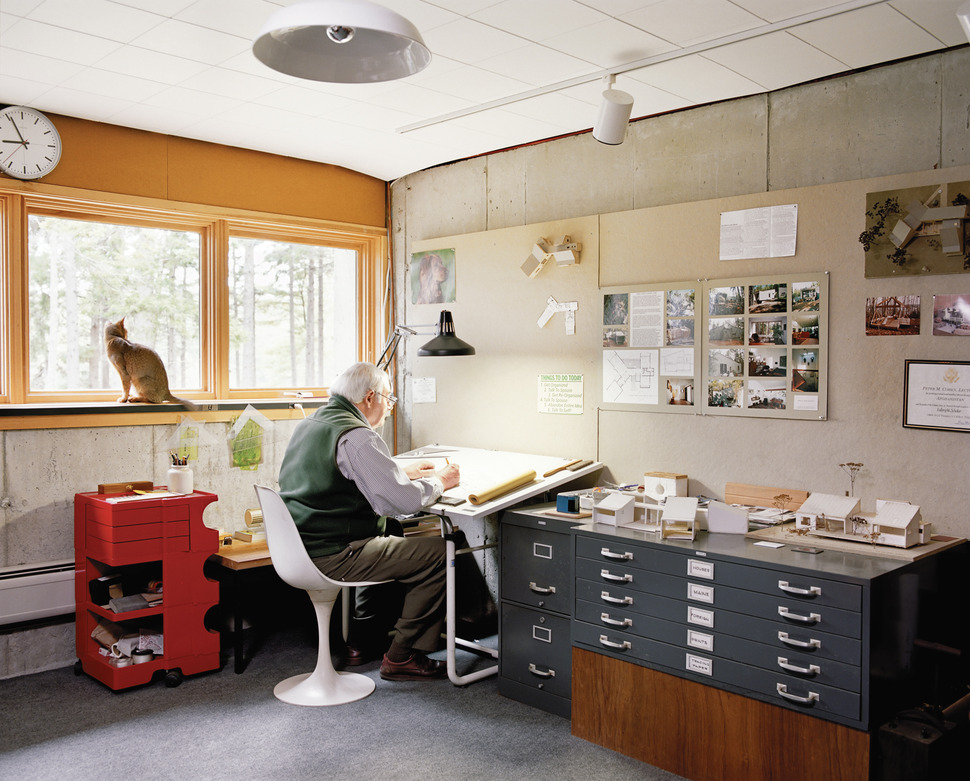
Cohen’s office, like the rest of the lower volume, is below grade but with windows just a few feet above the floor, natural daylight and river views permeate the space. The Spine and Module design system of this home is Cohen’s own concept and his home is the fifth one he has designed over the past 50+ years.
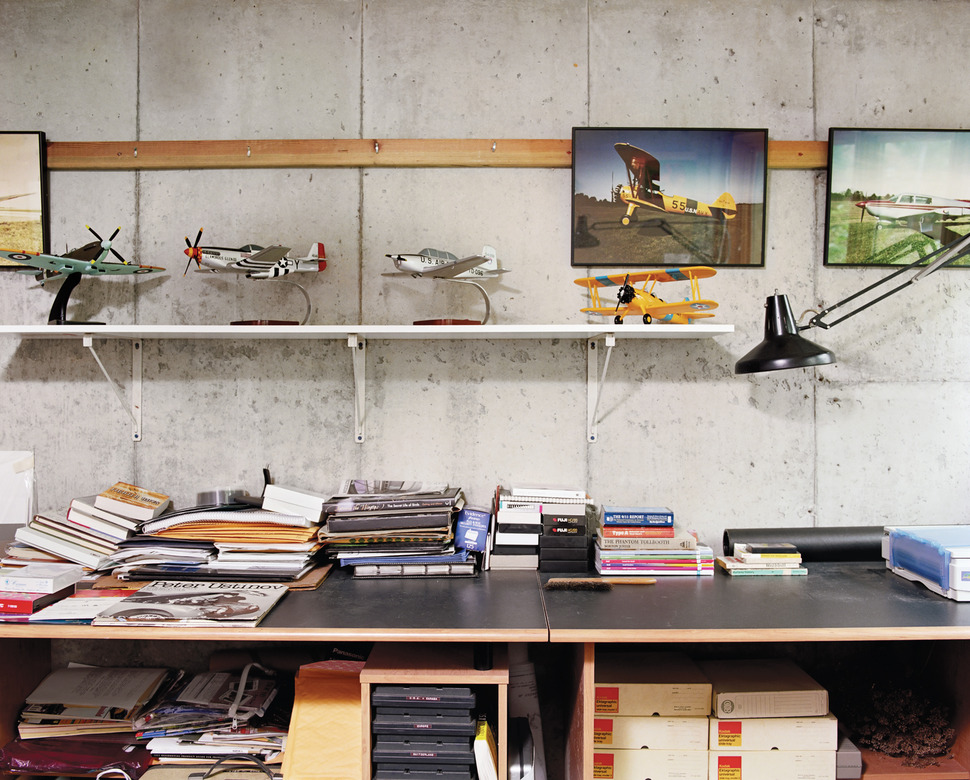
Aside from being an architect, Cohen was once a pilot and his office is filled with memorabilia from his flying days.
Via Dwell
Photography by Mark Mahaney
